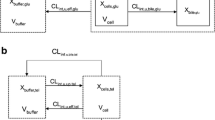Abstract
The study was designed to investigate the effects of phenobarbital (PB), 3-methylcholanthrene (3-MC), and oltipraz (OPZ), a synthetic derivative of 1,2-dithiole-3-thione, on the levels of cytochrome P450 1A1/2 and gluthathione transferase (GST) mRNAs in both fresh and cryopreserved human, monkey, and dog hepatocytes in primary culture. GST α mRNAs were demonstrated in liver parenchymal cells from the three species: after 4 days of culture, their basal levels were decreased, but were strongly higher in PB- and OPZ-treated cells from the three species. In contrast 3-MC was mostly effective on human hepatocytes. The increased levels of GST α mRNAs in the presence of PB or OPZ were not observed in all cell populations. GST μ mRNAs, which were detected in both dog and monkey hepatocytes, were induced only in the presence of OPZ. GST π mRNAs were expressed in dog hepatocytes but did not respond to any of the inducers. In all cases, similar effects were observed in fresh and thawed hepatocytes. Similarly, CYP1A1/2 transcripts were induced by 3-MC in both fresh and cryopreserved cells from the three species but also after OPZ treatment for monkey hepatocytes. These findings demonstrate that enzymes which play a major role in bioactivation/detoxication of xenobiotics remain expressed and inducible in hepatocytes from various species after cryopreservation and thawing.
Similar content being viewed by others
Abbreviations
- GST:
-
glutathione transferase
- CYP:
-
cytochrome P450
- PB:
-
phenobarbital
- 3-MC:
-
3-methylcholanthrene
- OPZ:
-
oltipraz
- DMSO:
-
dimethylsulfoxide
- FCS:
-
fetal calf serum
References
Asaoka K, Takahashi K. Monkey glutathione S-aryltransferases: II. Properties of the major enzyme purified from the liver. J Biochem. 1977;82:1313–23.
Chesne C, Guillouzo A. Cryopreservation of isolated rat hepatocytes: a critical evaluation of freezing and thawing conditions. Cryobiology. 1988;25:323–30.
Chesne C, Guyomard C, Fautrel A et al. Viability and function in primary culture of adult hepatocytes from various animal species and human beings after cryopreservation. Hepatology. 1993;18:406–14.
Dou M, de Sousa G, Lacarelle B et al. Thawed human hepatocytes in primary culture. Cryobiology. 1992;29:454–69.
Fabre G, Rahmani R, Placidi M et al. Characterization of midazolam metabolism using human hepatic microsomal fractions and hepatocytes in suspension obtained by perfusing whole human livers. Biochem Pharmacol. 1988;37:4389–97.
Guillouzo A, Morel F, Fardel O, Meunier B. Use of human hepatocyte cultures for drug metabolism studies. Toxicology. 1993;82:209–19.
Guguen-Guillouzo C, Clement B, Baffet G, Beaumont C, Morel-Chany E, Guillouzo A. Maintenance and reversibility of active albumin secretion by adult rat hepatocytes cocultured with another liver epithelial cell type. Exp Cell Res. 1983;143:47–54.
Hoesch RM, Boyer TD. Purification and characterization of hepatic glutathione S-transferases of rhesus monkeys. Biochem J. 1988;251:81–8.
Igarashi T, Nanba E, Sagami F et al. Dog liver glutathione S-transferase and its strong immunoreactivity with rat transferase-P (7–7). Biochem Pharmacol. 1988;37:4713–8.
Igarashi T, Kohara A, Shikata Y et al. The unique feature of dog liver cytosolic glutathione S-transferases. J Biol Chem. 1991;266:21709–17.
Kasai S, Mito M. Large-scale cryopreservation of isolated dog hepatocytes. Cryobiology. 1993;30:1–11.
Langouët S, Coles B, Morel F et al. Inhibition of CYP1A2 and CYP3A4 by oltipraz results in reduction of aflatoxin B1 metabolism in human hepatocytes in primary culture. Cancer Res. 1995;55:5574–9.
Langouët S, Mahéo K, Berthou F et al. Effects of administration of the chemoprotection agent oltipraz on CYP1A and CYP2B in rat liver and at hepatocytes in culture. 1996a. [Submitted].
Langouët S, Morel F, Meyer DJ et al. A comparison of the effect of inducers on the expression of glutathione S-transferases in the liver of the intact rat and in hepatocytes in primary culture. Hepatology. 1996b;23:881–7.
Mannervik B, Alin P, Guthenberg C et al. Identification of three classes of cytosolic glutathione transferase common to several mammalian species: correlation between structural data and enzymatic properties. Proc Natl Acad Sci USA. 1985; 82:7202–6.
Morel F, Fardel O, Meyer DJ et al. Preferential increase of glutathione S-transferase class a transcripts in cultured human hepatocytes by phenobarbital, 3-methylcholanthrene, and dithiolethiones. Cancer Res. 1993;53:231–4.
Nicolas F, de Sousa G, Thomas P, Placidi M, Lorenzon G, Rahmani R. Comparative metabolism of AZT in cultured hepatocytes from rat, dog, monkey and man. Drug Metab Dispos. 1995;23:308–13.
Nishibe Y, Hirata M. Effects of phenobarbital and other model inducers on cytochrome P450 isoenzymes in primary culture of dog hepatocytes. Xenobiotica. 1993;23:681–92.
Powis G, Santone KS, Melder DC, Thomas L, Moore DJ, Wilkie TJ. Cryopreservation of rat and dog hepatocytes for studies of xenobiotic metabolism and activation. Drug Metab Dispos. 1987;15: 826–32.
Rahmani R, Richard B, Fabre G, Cano JP. Extrapolation of preclinical pharmacokinetic drug use. Xenobiotica. 1988;18:71–88.
Rahmani R, de Sousa G, Marre F, Nicolas F, Placidi M. Potential of freshly isolated and cryopreserved human hepatocytes in drug research and development. In: Rogiers V, Sonk W, Shepard E, Vercruysse A, eds. Human cells in in vitro pharmaco-toxicology — present status within Europe. Brussels; VUB Press; 1993; 117–38.
de Sousa G, Dou M, Barbe D, Lacarelle B, Placidi P, Rahmani R. Freshly isolated or cryopreserved human hepatocytes in primary culture: influence of drug metabolism on hepato-toxicity. Toxicol In Vitro. 1991;5/6:483–6.
de Sousa G, Nicolas F, Valles B, Coassolo P, Rahmani R. Relationships between in vitro and in vivo hepatic biotransformation of drugs in humans and animals: pharamacotoxicological consequences. Cell Biol Toxicol. 1995; 11:147–53.
Sun EL, Aspar DG, Ulrich RG, Melchior GW. Cryopreservation of cynomolgus monkey (Macaca fascicularis) hepatocytes for subsequent culture and protein synthesis studies. In Vitro Cell Dev Biol. 1990;25:147–50.
Author information
Authors and Affiliations
Rights and permissions
About this article
Cite this article
de Sousa, G., Langouët, S., Nicolas, F. et al. Increase of cytochrome P-450 1A and glutathione transferase transcripts in cultured hepatocytes from dogs, monkeys, and humans after cryopreservation. Cell Biol Toxicol 12, 351–358 (1996). https://doi.org/10.1007/BF00438170
Accepted:
Issue Date:
DOI: https://doi.org/10.1007/BF00438170




